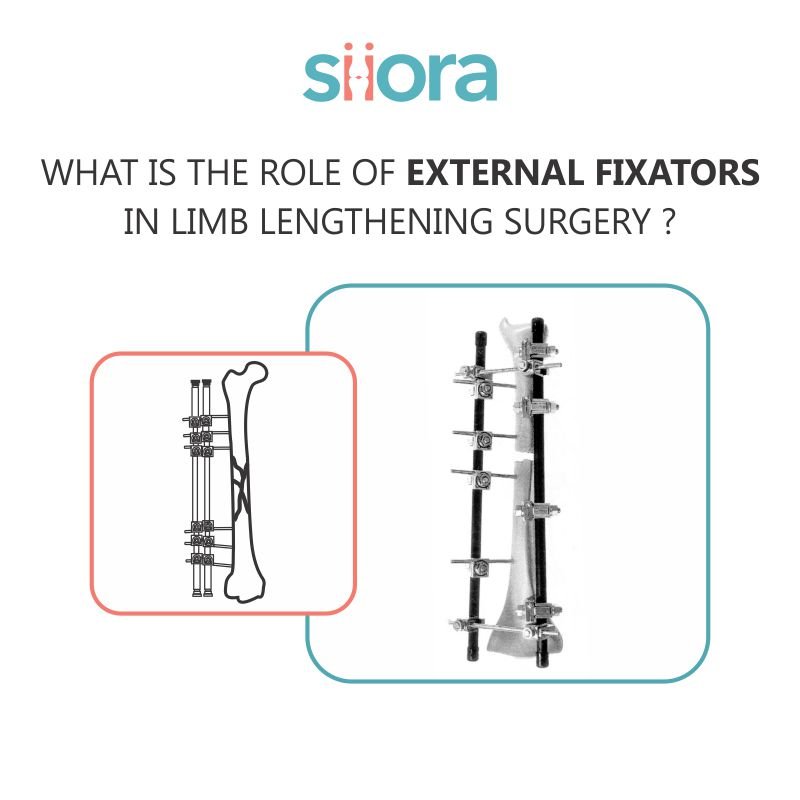It doesn’t matter what type of disease or injury a person suffers from, the body’s response towards that condition is always critical. There is no doubt that effective treatment is required for healing but, if the body does not respond in the way it should, the condition could become worse.
When we talk about fractures, the similar is the case. The doctor may perform surgery to apply Orthopedic implants or apply a cast or a splint to stabilize the fractured bone fragments, but the response of the body will decide how much time it will take to bring back the normal functioning of the fractured site and the effectiveness of the treatment.
We are here to discuss in detail how our body reacts to fractures and how it helps the bone heal after the treatment.
We must say that our body is magical, as it quickly responds to any injury or disease that occurs to minimize its effects till the time right treatment is taken. Even after the treatment, it supports fixing the condition as soon as possible in a better way. In some people, the response of the body is not normal, or we should say the response is not as it should be. In such cases, significant health complications may be seen other than ongoing conditions. Let us now move to our topic starting with the basics.
Composition of the Bone
Our bone is composed of two types of tissues:
- Compact bone
- Cancellous bone
Compact Bone (Cortical Bone)
It is the outer layer of the bone, which is hard, strong, dense, & durable. Around 80% of bone mass in adults is compact bone.
Cancellous Bone
Also known as trabecular or spongy bone, it is light, flexible, and less dense when compared to compact bone.
Besides these, the type of cells found in our bones include:
- Osteoblasts
- Osteocytes
- Osteoclasts
All these cells have different functions that help in keeping bones healthy.
What Happens When a Fracture Occurs?
When a bone breaks, intense pain is obvious, and when the body starts acting against the break, swelling around the injured area is noticed. Bones also contain blood vessels, and they get damaged in case of fracture causing hematoma. The blood clots form in the gap created between the broken bone pieces.
When the inflammation occurs, the immune system of our body activates stem cells in the surrounding tissues, bone marrow, and blood. They are guided towards the fracture site to start the healing process. Now, when it comes to the healing of the bone, these cells trigger two different pathways including:
- Cartilage Formation
- Bone Formation
How Bone Repairs?
The body works according to the severity of the fracture, and the healing process is known to start within a few hours of injury. Let us see step by step how this occurs:
Step – 1
When a fracture occurs, blood clots start to form on the fracture site, and that results in swelling. Here, the immune system of our body gets activated, and it triggers stem cells to migrate to the fracture site. It also activates special types of cells that eliminate germs and small bone fragments.
Step – 2
After 2-3 weeks, a soft callus is formed around the broken bone. This is also a stage where the blood clot is replaced by collagen. One of the key reasons why a cast is applied is to maintain the stability of the bone that is being healed. This is because if the fractured bone gets displaced during the healing process, the condition could become worse.
Step – 3
Around 2 weeks after soft callus formation, the body starts producing hard callus which is more stable & stronger. Cells involved in the formation of hard callus are osteoblasts. These cells are involved in the formation of new bone. This stage generally lasts around 6-12 weeks after the fracture.
Step – 4
This is the stage where bone remodeling occurs and that is initiated by osteoclasts. These cells reshape the bone by removing any extra bone that is formed during healing and ensures that the newly formed bone takes its original shape. At this stage, the person generally starts doing physical activity, and this actually helps in strengthening the newly formed bone. Slowly, the person can also return to normal activities. You might be surprised to know that the remodeling process could continue for long even after the person returns to his/her normal life.
How Much Time Does It take for a Bone to Heal?
In most cases, the average healing time of a fracture is about 6 to 8 weeks. Although, the time required generally depends upon the severity of the fracture. If the bone break is severe or complicated, complete healing may take even months. Besides this, the age of the person also plays an important role in deciding the time required for a fracture to heal. For example, healing might require a longer time in the elderly when compared to in adults. Some other factors that could affect healing include:
- Smoking
- Lack of physical therapy or exercise as suggested by the doctor
- Diet
- Rest
What is the Role of Surgeons in Ensuring Proper Healing of a Fracture?
Now, this is a good question. When the body responds to a fracture and helps it heal then what is the role of surgeons? Let us see why surgeons are important in ensuring the correct healing of a fracture.
When a fracture occurs, broken bone fragments could move in any direction, and sometimes, they even come out of the skin. For a broken bone to heal, the fractured pieces need to be in a correct anatomical position and close to each other. This will not happen on its own, and that’s where the role of surgeons comes in.
Depending upon the diagnosis of the fracture, the surgeon decides whether the broken bones require surgery for realignment, or it could be done without that. If surgery is not required, the surgeon might perform closed reduction to realign bones if needed, and then apply a cast. Sometimes, the application of a splint is also helpful.
Surgery
While on the other hand, if it is not possible to realign broken ones with closed reduction, or the fracture is complicated, surgery will be recommended. It is done either under general or local anesthesia. An incision is made during the surgery to expose the fractured bone, and pieces are then realigned in their true anatomical position using Orthopedic Trauma Implants like metal plates, screws, and pins.
Once bones are realigned, the proper healing process starts.
So, this is how a broken bone heals and helps the person get back to his/her normal life. We hope it would have been helpful to you.
Siora Surgicals Pvt. Ltd. is a CE-certified manufacturer of an extensive range of orthopedic devices including Hand Locking System, SCRUCAN Cannulated Compression System, and ILIZARC Ring Ex-Fix System. The company is operating for over 3 decades, and most of the distributors & orthopedic surgeons are connected with Siora for about 25 years. This is the kind of trust the company has built over the years. Siora also provides high-quality OEM/contract manufacturing services.








